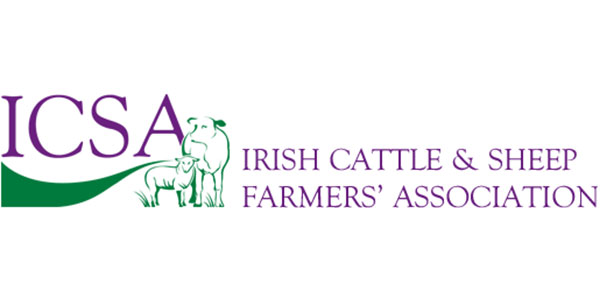July 23rd 2014
Teagasc National Farm Survey Publish 2013 Enterprise Factsheets
The final results from the Teagasc National Farm Survey 2013 show that the average income level on Irish farms remained steady in 2013 at an average of €25,437 per farm (preliminary estimated were published on the 27th of May, 2014). However, the stability in the average income level, masks dramatically contrasting fortunes across the different farming enterprises.
Today, the Teagasc National Farm Survey also publish their Enterprise Factsheets for 2013, for the Dairy, Single Suckling, Cattle Finishing, Mid-season Lamb and Cereal enterprises.
For all grassland based farming enterprises, the late spring in 2013, following on from the impact of the fodder crisis in 2012, led to dramatic increases in purchased concentrate, bulky feed and fertiliser expenses, while in the second half of 2013 expenditure on fertiliser increased as farmers sought to restore stocks of conserved forage.
Average dairy margins and winter wheat margins in 2013 increased, but margins for all the other enterprises decreased due to higher costs of production.
Cattle Finishing
For the Cattle Finishing Enterprise, owing to the increase in average feed usage, there was a notable decline in the number of farmers achieving the concentrate feed usage targets as set out in the Teagasc Beef Production Road Map. Total direct costs of production increased by almost one fifth (18%) between 2012 and 2013. This increase was mostly due to the increase in expenditure on concentrate feeds (+20%) and pasture/forage costs (+19%). On average, Cattle Finishing enterprises generated a negative net margin of -€133 per hectare in 2013; this loss is 166% higher than the loss incurred in 2012. The sale prices for finished animals declined by circa 10% between 2012 and 2013. Anne Kinsella of the Teagasc Agricultural Economics and Farm Surveys Department said “There is a notable difference between the margins earned on the top performing and bottom one third of farms, mostly due to superior productivity rather than differences in prices paid and received for animals. In 2013 one tenth (11%) of cattle finishing enterprises earned a negative gross margin, i.e. where direct costs were greater than output value, representing a two fold increase relative to 2012 (5% 2012). Over one third earned a gross margin of €500 or more per hectare in 2013.”
Single Suckling
Single suckling to weanling is the most prevalent production system, operated on one third of farms. However, single suckling farms that take cattle to finish was the most profitable suckling system in 2013. Despite declining prices for majority of cattle categories in 2013, gross output on Suckling farms increased by 4%, on average. The increase in output value was, however, insufficient to cover the large increase in production costs, direct and fixed costs which increased by 20% and 4% respectively, with expenditure on concentrate feed increasing by almost one third (30%). On average the negative net margins (losses) on suckling enterprises were 167% higher in 2013, increasing from -€46 in 2012 to -€123 in 2013.
When farms are classified on the basis of gross margin per hectare, farms in the top group i.e. the best performing one-third of farms, typically achieve a 10 to 22% price premium for their animals when compared to farms in the Bottom group. Anne Kinsella of the Teagasc Agricultural Economics and Farm Surveys Department said “This suggests that the top group of farms are producing animals that are better aligned with what the market is demanding.” The natural advantage conferred by good soil quality on the top group is also evident with over two thirds (69%) of these farms operating on very good soils. This group earned a gross margin of €588 per hectare in 2013, more than 13 times higher than the margin earned by the Bottom Group
Mid-Season Lamb
In 2013 the share of mid-season lamb producers achieving the weaning and stocking rate targets that are set out in the Teagasc Road Map for sheep production has increased. The average weaning rate per ewe increased by 8% (to 1.3 lambs/ewe) while the average stocking rate per hectare increased to 7.5 ewes/hectare. Performance along the other technical indicators deteriorated with the poor weather requiring increased levels of concentrate usage. “The hard winter and late spring of 2012/2013 however meant that some of this improvement in weaning and stocking rates was offset by higher levels of lamb mortality, which increased by 13% in 2013”, said Dr Kevin Hanrahan of the Teagasc Agricultural Economics and Farm Surveys Department. Overall the volume of lamb carcass produced per hectare in 2013 increased by 14kg (8%) in 2013. There are just 16% of farms with flocks of 150 ewes or more, these farms accounting for 17% of total lamb production.
In 2013, a quarter of mid-season lamb enterprises earned a gross margin of less than €300 per hectare while at the opposite end of the distribution, one tenth of farms earned a gross margin of €1,000 or more in 2013. When Mid-Season Lamb farms are classified on the basis of gross margin per hectare; the gross margin per hectare earned is almost five times higher on the top farms as compared to the Bottom farms. Gross output on the best performing one-third of farms (top Group), is more than double the output of the Bottom group of farms, due to higher weaning and stocking rates. However, total direct costs are only 6% higher on the top Group verses the Bottom group, despite the significantly larger output. On average, total direct costs increased by a quarter (26%), with expenditure on concentrate feed increasing by 40%. Average net margin per hectare declined by 75% in 2013 as compared with 2012.
Tillage – Cereals
On the tillage side Dr Fiona Thorne of the Teagasc Agricultural Economics and Farm Surveys Department said ‘it is difficult to generalise about the outcome for 2013 margins on cereal farms as it was a year of mixed fortunes for individual crops’. Yields were however in general higher in 2013 than those experienced in 2012, and price generally significantly lower. Where the differences occurred was the magnitude of the yield increases and price decreases for individual crops. For example, for Winter wheat gross margins actually increased slightly in 2013 relative to 2012 as price decreases were more than compensated by yield increases. On the other hand, gross margins for Spring barley declined in 2013 relative to 2012 as a decline in price negated movements in yields and costs. The average gross margin for Winter wheat and Spring barley in 2013 was €915 and €534 respectively.
Dr. Fiona Thorne went on to say that “behind these average figures there remains a wide variation in terms of economic performance of individual cereal farms nationally”. The top half of Spring barley producers received a market based net margin €280 per hectare, while the bottom half of producers received a market based net margin of – €190 per hectare.
The final Teagasc National Farm Survey 2013 and the enterprise fact sheets can be viewed at www.teagasc.ie/publications
Teagasc Mid-Year Outlook for Irish Agriculture 2014
In its mid-year assessment of likely farm profitability in 2014, Teagasc economists have highlighted falling production costs as the main driver of farm incomes in 2014.
Speaking on the release of the Teagasc Mid-year Outlook for Irish Agriculture 2014, Teagasc economist Trevor Donnellan said; “Following two high production cost years in 2012 and 2013, Irish farmers are finally now seeing a reduction in their input spending”.
With generally good grass growing conditions to date in 2014, the main driver of the fall in production costs has been reduced expenditure on concentrate feeds, which have now reverted back to a level which would be considered normal. Compared with this time last year, feed prices are also lower, bringing additional savings to livestock farmers.
So far this year, farmers have also experienced reductions in their fertiliser and fuel bills, while inflation in other costs continues to remain low.
As a result of these falling production costs, dairy, sheep and cattle rearing farms should see an increase in their gross margins in 2014.
However, Dr Kevin Hanrahan, Teagasc economist said; “It is not all good news, with the fall in the costs of production being insufficient to offset the fall in the price of cattle received by beef finishers, whose margins are now forecast to decline in 2014”.
With a large global crop harvest now forecast for 2014, it would appear that cereal prices this year will be lower than those of the 2013 harvest. Nevertheless cereal producers will also benefit from a reduction in their costs, although not to the same extent as grassland farmers.
Dr Fiona Thorne, Teagasc economist said; “Even if yields in 2014 are to exceed average trend yields as indicated by crop growth and early harvest indications, it is unlikely that this would be sufficient to overcome the impact of lower cereal prices and therefore cereal margins in 2014 are forecast to be lower than in 2013”.
The Teagasc Mid-year Outlook for Irish Agriculture 2014 is available at http://www.teagasc.ie/publications/2014/3236/Review-and-Outlook-July23_final.pdf






